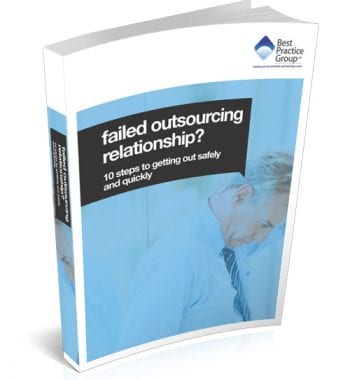 New York-based turnaround management specialists, Alvarez & Marsal, were appointed as administrators of NMC Health after irregularities were discovered in the company’s accounts. By the end of 2020, it was reported they had issued a ‘preliminary notice’ of a potential claim of up to $4bn against the company’s auditors, EY, for ‘neglect’ in the latest chapter of what is seen by some as a long-running fraud scandal. It’s also reported that the FRC has been investigating EY’s involvement.
New York-based turnaround management specialists, Alvarez & Marsal, were appointed as administrators of NMC Health after irregularities were discovered in the company’s accounts. By the end of 2020, it was reported they had issued a ‘preliminary notice’ of a potential claim of up to $4bn against the company’s auditors, EY, for ‘neglect’ in the latest chapter of what is seen by some as a long-running fraud scandal. It’s also reported that the FRC has been investigating EY’s involvement.
If you have a strategic provider that has let you down, careful consideration must be taken as to how you remediate the relationship. If your decision is to exit your relationship early this can not only be extremely costly, but the ramifications of disruption to the day-to-day role your strategic partner provided could reverberate far further and deeper than is often first realised. Evidence from our dealing with over 500 of these complex relationships, outlines there are four key observations to ensure your relationship gets back on track, quickly.
The rise and fall of NMC Health
New Medical Centre (NMC) Health was founded in 1975 by Indian-born businessman Bavaguthu Raghuram Shetty. Initially the centre had just one doctor – his wife – but the business grew to become the UAE’s leading private healthcare provider with millions of patients across hundreds of facilities in 19 countries around the world, including here in the UK.
The company joined the FTSE 100, growing through the purchase of clinics, surgeries and hospitals, as well as opening divisions in FMCG, medical supplies and educational products, among others.
B.R. Shetty ran the business until his removal from the board in 2020 just before the company went into administration. Shortly before that, it was reported that the Abu Dhabi Commercial Bank filed a criminal complaint against the company.
The company’s prospects took a downturn when San Francisco-based investment firm, Muddy Waters Research, published a 34-page report which questioned the NMC Health’s financial statements, asset values, cash balance and reported profit and debt levels. Muddy Waters has built a reputation for exposing accounting issues in organisations across Asia, and in 2019, they turned their investigative eyes to NMC Health, reportedly stating: “We believe that NMC has manipulated its balance sheet to understate debt.”
Initially it was thought that the company had $2.1bn of debt, but this was later revised to $5bn, and then, more recently, to $6.6bn.
The Times reported that evidence had been uncovered of “suspected fraudulent behaviour in relation to some elements of its previous financial activities”.
The company set about its own internal investigation led by law firm Glaser Weil, supported by former FBI director Louis Freeh, but in November 2020 Alvarez & Marsal were appointed as administrators of the company. Shortly afterwards the accounts of B. R. Shetty and his family were reportedly frozen. However, he has reported saying that he himself was a victim of fraud by a small number of executives from within his own organisations.
A 4-step guide if your strategic provider lets you down
All strategic partnerships go through strained times – the question though is, would you recognise when the benefits of exiting the relationship exceed the significant costs of doing so?
After decades of working on the creation, resolution and exit and transition management of hundreds of complex strategic relationships, we know that an early exit is something that must be thoroughly considered before being embarked on. Every reasonable avenue for resolution should be considered first.
The costs associated with undertaking an early contract termination are not only those set out in your contract to compensate your strategic partner. They can often run far deeper than this, relating to the time it will take to source a new provider and bring them up to speed, the ‘jolt to the system’ that such a significant change may have on your organisation, and the potential for reputational issues as a result of the inevitable disagreement that will follow.
In brief form the steps to consider, along with your own thinking, are:
-
- Carefully consider why the relationship is where it is
There are so many reasons why a client-provider relationship can break down. It could be as a result of poor business case consideration leading to underdeveloped clarity on ‘what good looks like’.
It could be that insufficient due diligence undertaken by the supplier on your expectations, which has resulted in them not identifying where weaknesses in the client’s requirements lie and whether stated outcomes are achievable.
It could be because a supplier is trying to fill their client’s quite specific hexagonal project hole with their generic, standardised, square peg solution. Or, and this can be challenging for some clients to consider, it could be that actions or inactions from client-side teams or individuals could be retarding the process, holding a supplier back from performing optimally.
-
- Listen to your provider’s reasoning. Do they have a valid argument?
When a relationship is on the wrong trajectory there is often a back and forth of accusations with no one willing to accept responsibility for the place you are now in. However, it is important to analyse your provider’s reasoning, because if they have a valid argument, there may be a less drastic way forward available to you than terminating the relationship.
Counter accusations a provider is likely to use may fall within a number of camps – you’ve not been clear about your requirements from the start, you’ve changed your mind about what you wanted, you’ve been slow in performing your side of things, and so forth. However, you need to consider such counter accusations in line with your provider’s “Expert Responsibilities” and its “Duty to Warn”.
The first thing to do is to establish whether any of this is true by consulting your thorough project documentation (both in terms of what was supplied to your provider at the outset and in terms of action and inaction, specific issues and audit trails when challenges on the project were established). This can either give you the ammunition to counter their arguments or reveal relationship limiting actions and behaviours that either or both parties can work on to put the relationship back on track.
-
- Have you tried everything?
There are numerous avenues you could go down before you consider early contract termination, depending on the issues you have recognised or suspect. Have you tried them all? The reasons for a breakdown in communication, reduction in productivity, a deviation from expected destination or any other reason why you are considering exiting your provider relationship can be many and varied.
They can be caused by individuals working outside of the best practices of their organisation, teams who have been poorly trained, company-wide poor governance, opportunism, or a plethora of other reasons. Each has its own toolbox of resolutions that need to be tweaked for the individuals, teams and organisations involved.
This can be a complex exercise, but there is often a solution out there if you have the patience, persistence, and sometimes the external expertise to help you find it. One effective solution (given the right circumstances) is to renegotiate your agreement. With a little give and take you can ease the stresses on your provider while tightening the governance and ramifications for underperformance to keep them on the straight and narrow.
-
- If all else fails, exit in the most painless way possible
Your first port of call should be your contract. It will provide a roadmap for exiting your relationship, the circumstances in which you can do so, and the costs should you wish to terminate early. Take a good look through these as they may well inform you to a far greater degree of the ‘downside’ to termination: the financial cost of doing so.
It’s important to formally communicate your wish to terminate the agreement with your provider and to follow the process set out in your contract, being mindful not to behave in such a way, post-termination, that could be construed as you carrying that relationship forward (or a provider could argue that they may still be due some of their rights under the former agreement).
However, if you are able to evidence that a breach of ‘condition’ has occurred, i.e. a serious breach in service delivery, then you may have a legal case for termination without penalties. If you suspect this is the case, then there are various mechanisms that can be applied to identify whether the results are material enough to consider this root.
Conclusion
We’ve set out a brief guide to some of the considerations that any client should go through before seriously pursuing an early contract termination, and these steps are just as relevant to a troubled audit partner relationship as any other strategic provider you may work with.
As for EY’s issues with Alvarez & Marsal, the suggested penalty of $4bn is a significant sum and another indicator of the troubles of this sector in recent years. As a result, the auditing world is currently going through a major overhaul, as the Financial Reporting Council (FRC) looks to implement its evolution of the sector to prevent the all too common issues and accusations of fraud in the market.
These are accusations which are reported to be often laid at the doors of the accounting Big Four – PWC, KPMG, Deloitte and EY. It is hoped that this will refocus all audit firms on the already fairly comprehensive ICAEW code of conduct, which offers a clear guide to best practices and standards from its members, because if we cannot have confidence in the world’s largest ‘experts’ in their field, who can we rely on?

